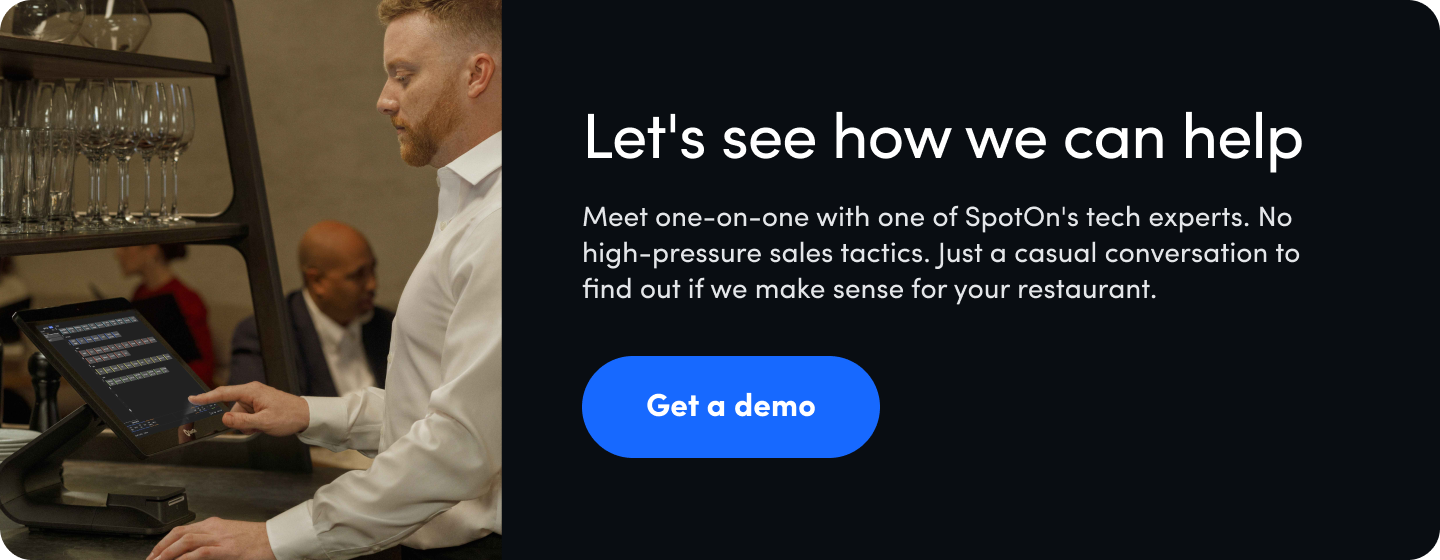Giving should feel good. Yet, the practice of giving tips has become a much-maligned and misunderstood aspect of the restaurant experience. While tips are intended to incentivize exceptional service, some workers see tipping policies as a barrier to a living wage for all. Operators have to navigate the complex world of tip pool options, service charges, and minimum wages and ensure their employees are motivated and paid well, all while striving for profitability.
Then there are guests, surrounded by opportunities to tip, from dog groomers to massage therapists. Most restaurant guests know to tip in full-service restaurants. That doesn’t mean they fully understand how tips factor into a restaurant’s financials or server’s take-home pay.
For as long as tipping has been standard in the American hospitality industry, people have argued for and against it. Today’s restaurant operators and servers weighing in on the tipping debate are joining a long cast of characters, including Ralph Waldo Emerson and Mark Twain, who voiced their distaste for the gratuity system. The context is different, but the debate continues: how much to tip?
The backstory of tipping
Tipping gained popularity in the United States in the post-Civil War era. Around that time, many found tipping to be an undemocratic relic of Old World Europe. Many states, including Tennessee, South Carolina, and Washington, passed anti-tipping laws that weren't repealed until the mid-1920s.
Public sentiment towards tipping changed over time, and by the 1940s, it was an acceptable practice. In 1966, Congress created the concept known as the "tip credit," allowing employers to pay their tipped workers a subminimum wage that would be combined with their tips.
Now, tipping is widely accepted across industries. New technology, like handhelds and contactless payments, have increased the ease and convenience of tipping. In the restaurant industry, many operators have experimented with service charges or tip pooling instead of the traditional tip. Some cities, like Chicago, Illinois, have eliminated the tip credit, establishing a minimum wage for all workers, tipped or untipped.
The ubiquity of tips, the prevalence of cash-free payments, and a lack of clarity around service charges have left consumers and operators alike searching for a sustainable solution.
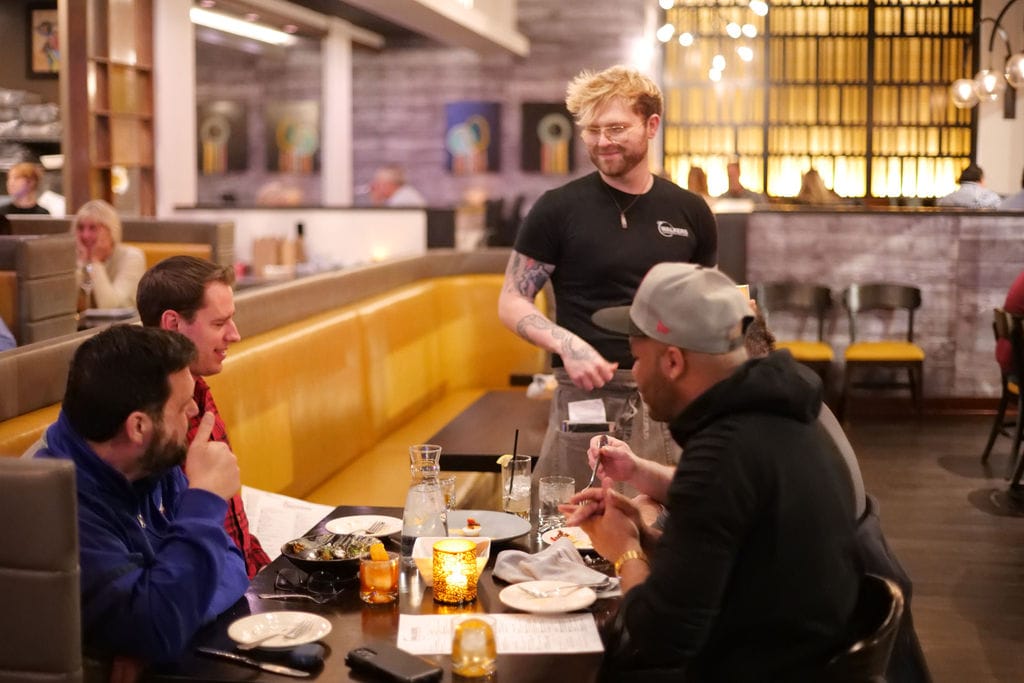
Tipping customs in the service industry
Tipping is an essential part of the experience at (most) full-service restaurants. It's a way to acknowledge the excellent service (and food) and reward the people who make up a wonderful hospitality experience. While restaurant work has never been a walk in the park, the Pandemic shed light on how challenging service professions can be.
There's a lot that the general public doesn't understand about restaurants. Many diners don't know that sub-minimum wages or tip distribution exist, let alone understand the nuance of how each restaurant divvies up its tips.
While each restaurant has its own policy, you can still make informed decisions. The Emily Post Institute, an etiquette guide that has been printed since 1922, has created multiple guides for every possible tipping scenario. Tipping can be stressful when you don’t know the correct protocol. Here's a chart to understand which general rule applies to which situation.
Tip chart
Here's a guide on how much to tip restaurant staff members—from wait staff to bathroom attendants. These are standard tip amounts for situations where there isn't a specific charge for service. It also doesn't take into account circumstances where employees go above and beyond to create a memorable experience.
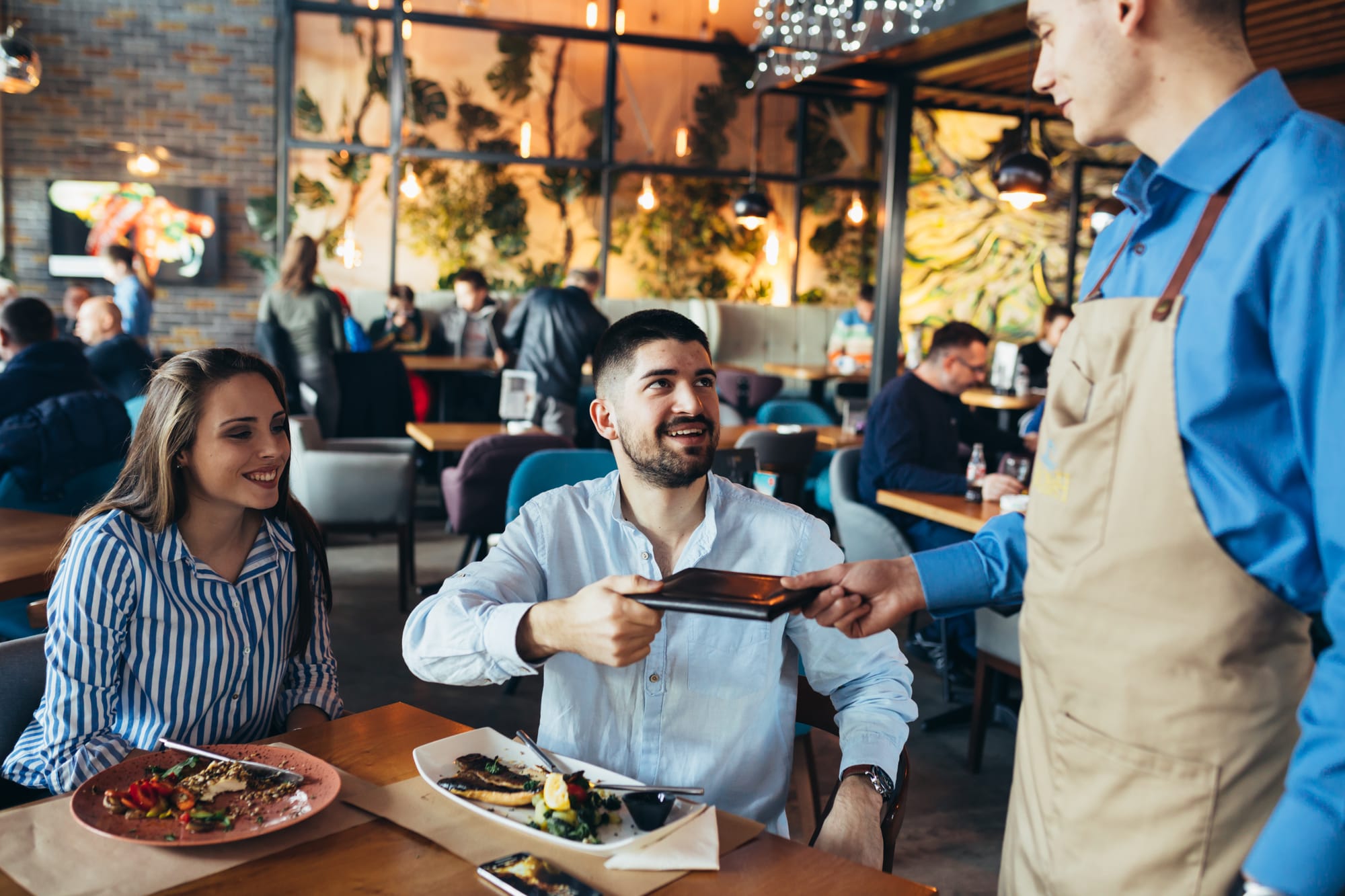
More best practice advice for tipping
Card or cash
Where tipping is concerned, cash is king. Cash tips help ensure the money is going into your server's hands without any interruptions. However, roughly 40% of Americans say all of their weekly transactions are cashless. Adding a tip to your total bill and paying with a card is completely acceptable.
When guests tip by card, someone on staff, typically the general manager, has to run checks at the end of the night and calculate tip amounts. This can be a time-intensive and error-prone endeavor. Often, managers will manually place the total tip out, in cash, in an envelope. It means the risk of paper cuts, mistakes, or worse. Tip management software can eliminate this end-of-night drag and help managers save time calculating and distributing tips.
Tipping via a mobile payment app
In some scenarios, like for valets, bathroom attendants, and coat check staff, the service provider may accept tips via mobile payment apps like Venmo or Zelle. These situations are rare and often voluntary tipping situations where there is no pressure to tip for the service provided.
Pre- or post-tax
Another tip amount variable is whether you're using the pre- or post-tax total. Ask any etiquette expert, and they'll recommend pre-tax tipping since the tax amount isn't technically related to the meal or the special service. Depending on the tax rate in your state, you might be able to double the tax to calculate an adequate tip. For example, if local sales tax is around 7.5%, doubling the sales tax line item is an easy way to ensure you’re tipping around 15%.
Large party tips
Large parties are more taxing on your server. They require a server to spend more time taking orders and engaging with each person. That means they take on fewer total tables tables and in some circumstances, might not be able to spend as much time with their smaller tables.
It’s the art of spinning plates—sometimes literally. Large groups often take a village behind the scenes to coordinate and serve dishes and, depending on the restaurant’s tip agreement, those support staff might also need to get tipped out.
Many restaurants add automatic gratuity for large parties, somewhere between 15-20%. If the server exceeded expectations, adding to that tip amount is welcome.
Splitting the bill
Depending on the restaurant POS system, splitting the bill can be a huge pain in the server's backside or an easy win for a smooth guest experience. If you're splitting the bill, it's best practice to split the tip evenly among guests. That helps protect against less-than-generous tippers in your grip and ensures your server is fairly compensated.
Complimentary Items
If you're lucky enough to score a comped item, drink, or have your entire meal taken care of, you'll still want to tip. Tip according to the meal's full price. The same rule applies if you're applying loyalty rewards. Since your tip goes directly to your server, disregard any discounts or coupons and tip based on what would have been the full amount.
If you don't carry cash and your meal is completely comped, you can ask your server to charge a penny to your card and tip using that check.
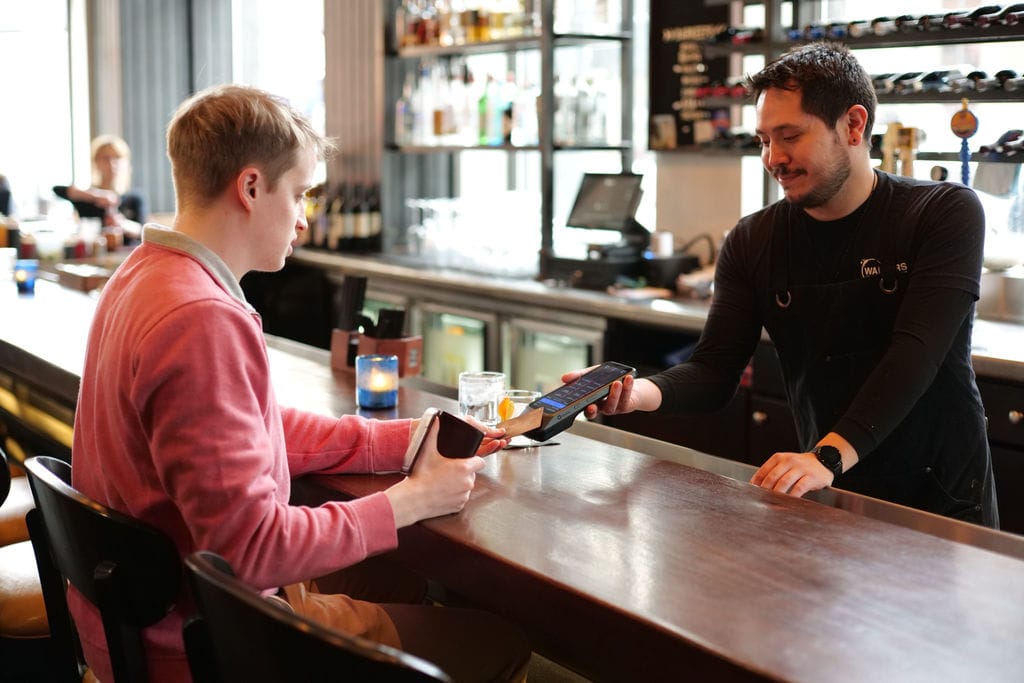
The state of tipping today
In the wake of the pandemic, tips became a common practice for many businesses. To leave a tip was to appreciate the risk workers took to serve customers. While customers were initially enthusiastic, as the Pandemic and associated risks waned, it led to “tip fatigue.” Consumers are frequently being asked to tip, and they’re tired of it.
In some professions, tips have always been the norm. You would likely leave a few dollar bills in the hotel room for hotel housekeeping or your shuttle driver, and you would definitely rather tip movers than do all the heavy lifting yourself. For many servers, gratuity is an acknowledgment that the hospitality of a sit-down meal is more of an art than a science.
The now-ubiquity of tips in coffee shops, professional service situations, and fast-food restaurants has also created a phenomenon called “tipflation.” At some locations, front-facing displays began making higher and higher tip percentages (22%, 25%, 28%) more convenient for customers.
The increase in tipped workers doesn't necessarily mean better service. Thankfully, data from the recent report "Beyond Gratuity: Perspectives of Restaurant Staff on Tipping Practices" confirms tips have remained relatively constant as restaurants leverage tech to improve the dining experience.
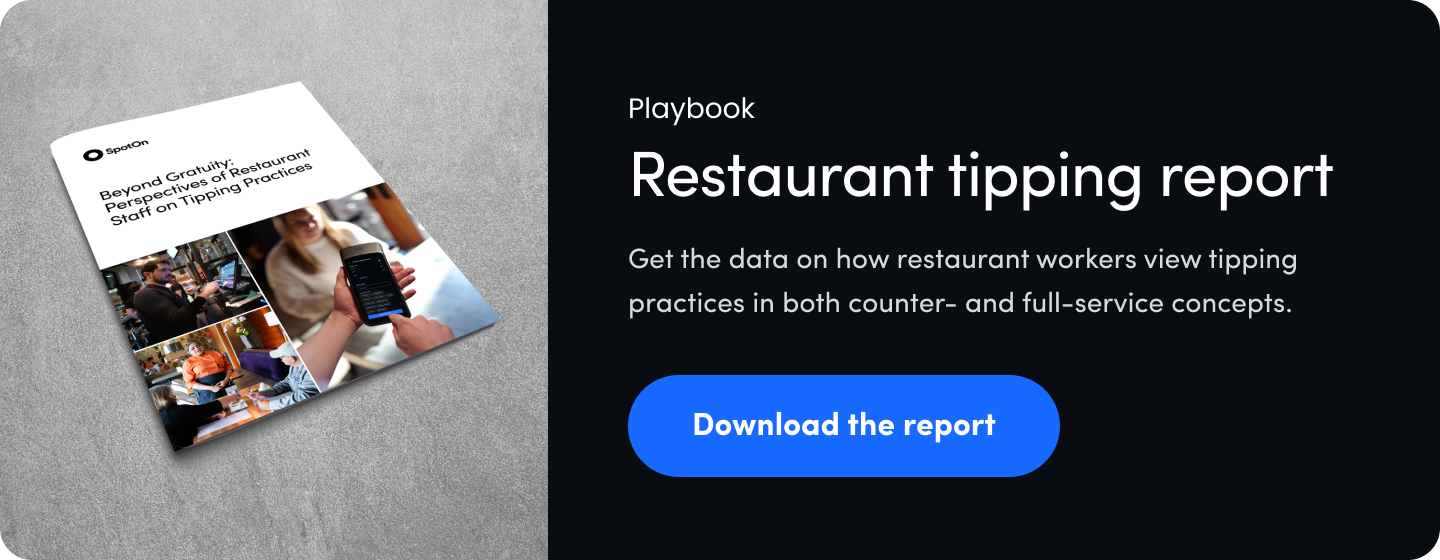
What is a service charge?
Some restaurants have enacted service fees, or charges, in lieu of tips to ensure each server receives a fair amount on top of the bill. Instead of letting each guest decide how much to tip, these bill additions level the playing field among customers.
On one hand, this is a helpful addition to a server's direct wages that doesn't come at an unsustainable cost to the restaurant. However, these bill additions can be confusing for customers, who aren't sure whether the money goes directly to each person or if it's skimmed by the restaurant.
What's more, some states have legislated against "junk fees," requiring restaurants to remove mandatory fees or surcharges from the bill. California is one example of banning so-called junk fees. For many restaurants, these charges aimed to offset ever-increasing costs without deterring guests with skyrocketing menu prices.
If you're wondering how much to tip, you're doing something right.
You don't need to be an etiquette expert fresh out of protocol school to know how much to pay the hardworking person providing you with food and services. Whether you're dining at a hotel or picking up the group bar tab, taking the time to consider how much to add on for the staff shows that you acknowledge the work that goes into your hospitality experience.
Of course, your financial situation also factors into the amount you tip. We've all seen $1,000 tips go viral, but for most of us, that's not feasible. If you can afford to be generous, share that generosity with your server. For ex-industry folks, this is a no-brainer. According to USA Today, one of the main reasons people tip is because they're familiar with the industry and know how demanding the work can be.
Saying that you're grateful is important, but showing that gratitude in your final bill can have a lasting impact on your server's livelihood. You may feel guilty if you don't tip, but more importantly, you'll feel great showing your appreciation and rewarding someone who is truly earning it.
